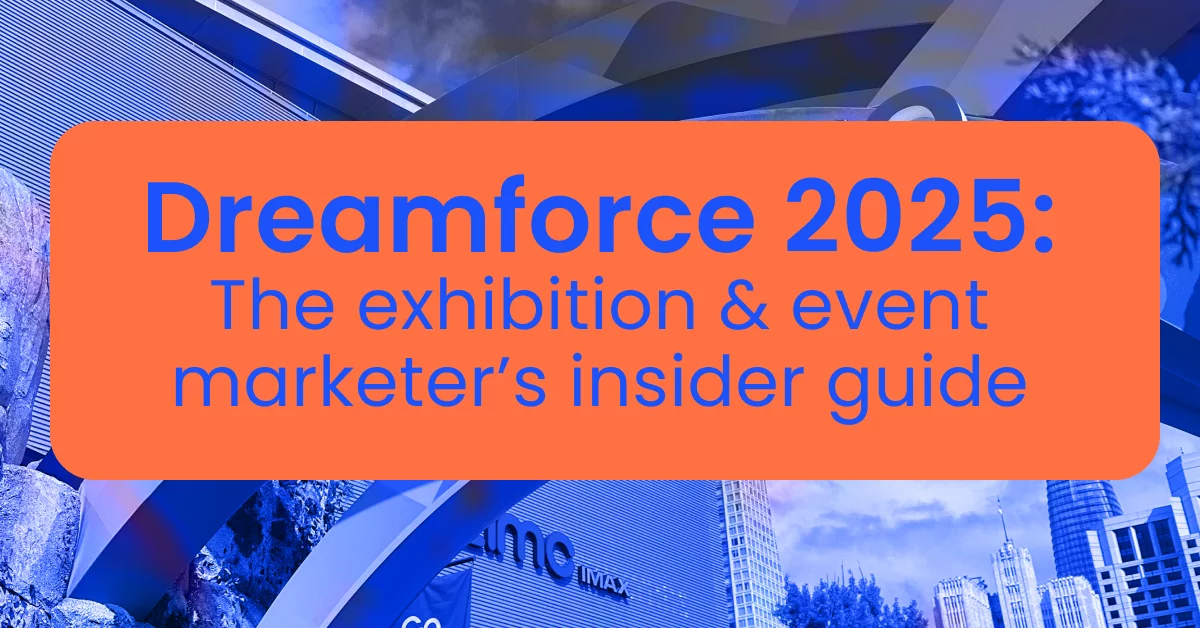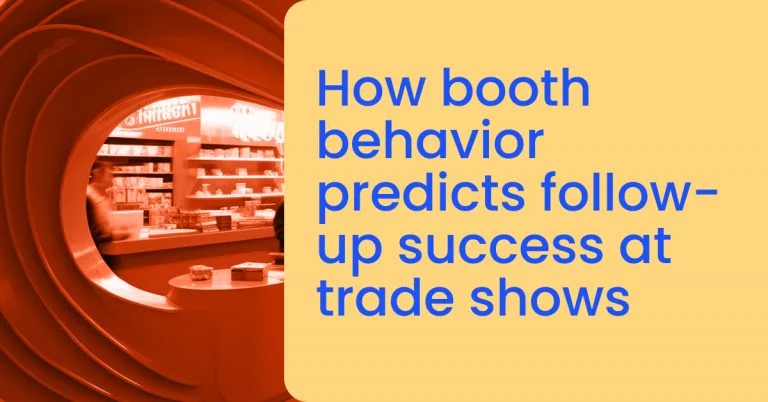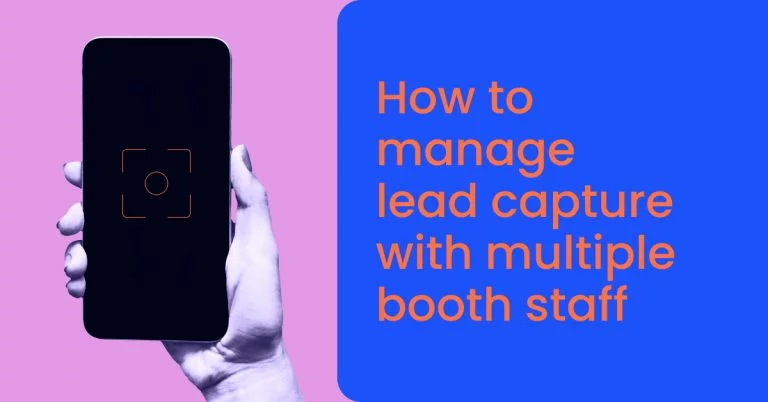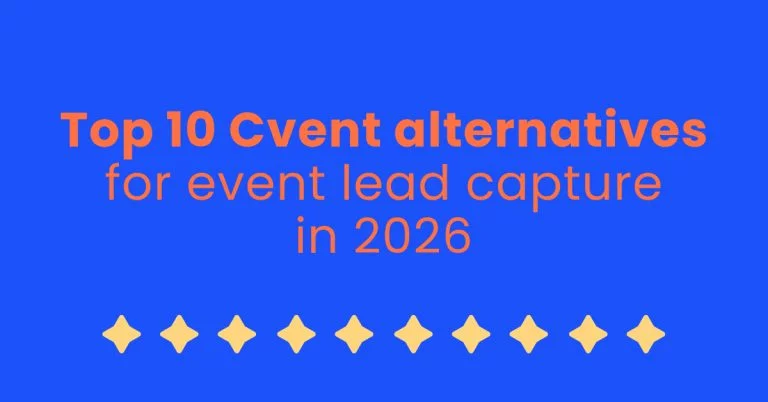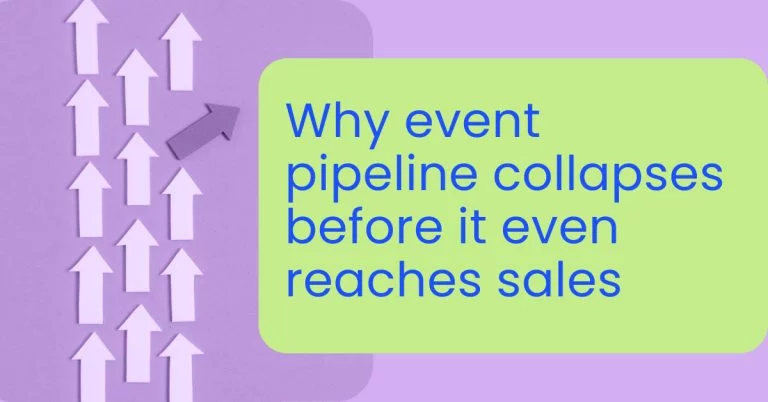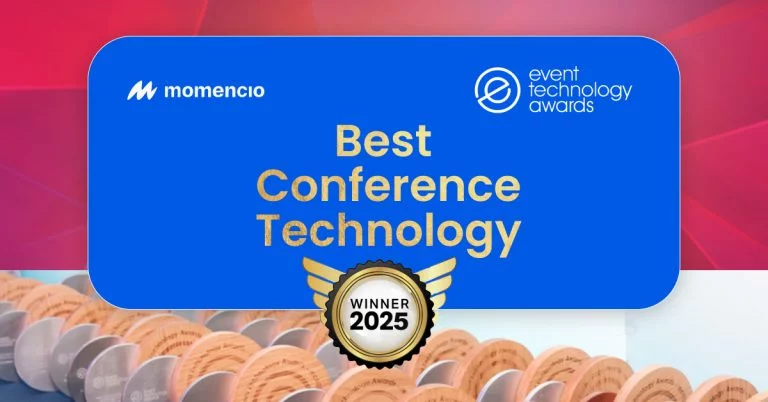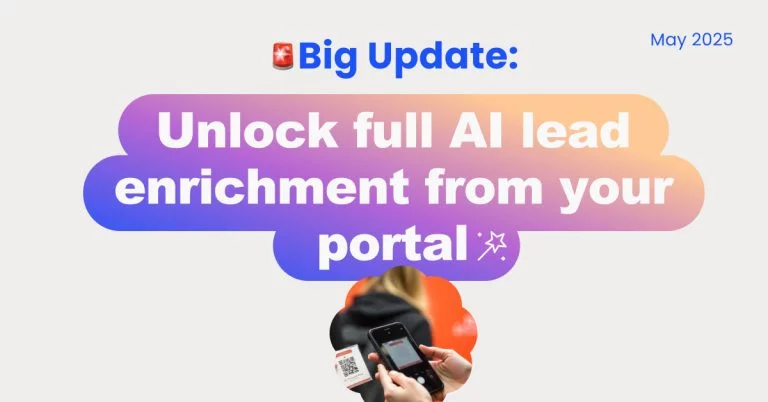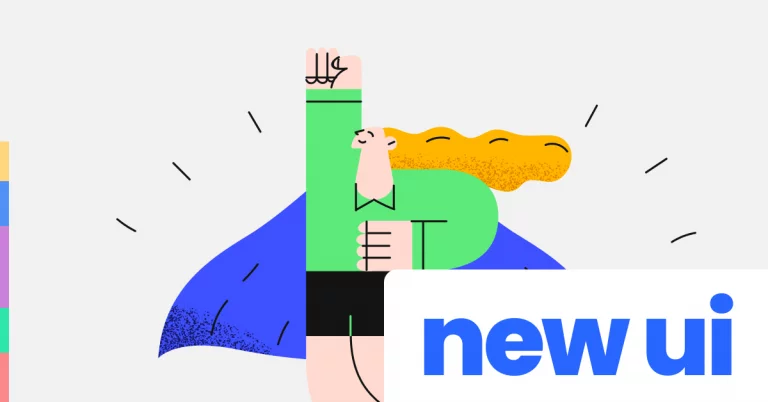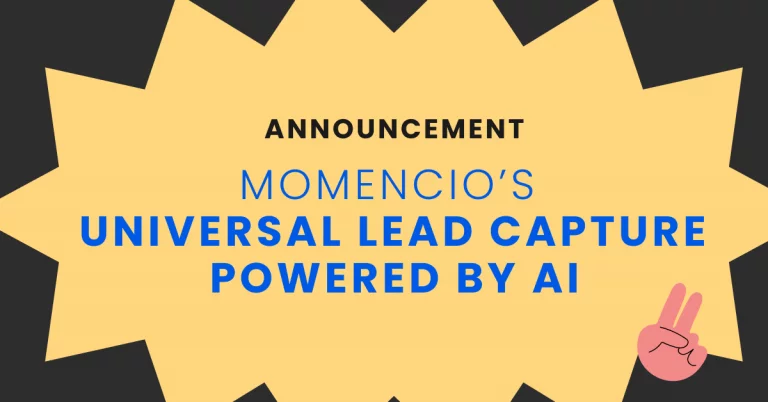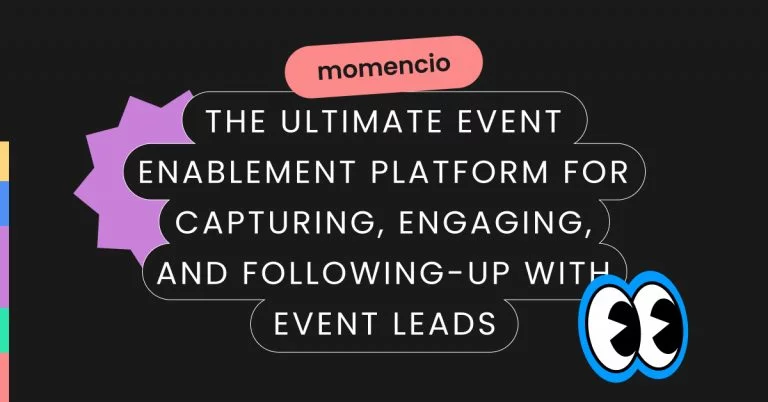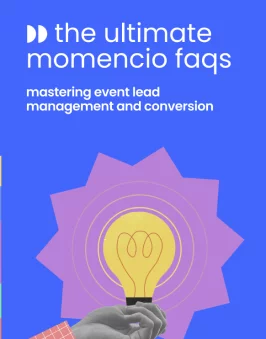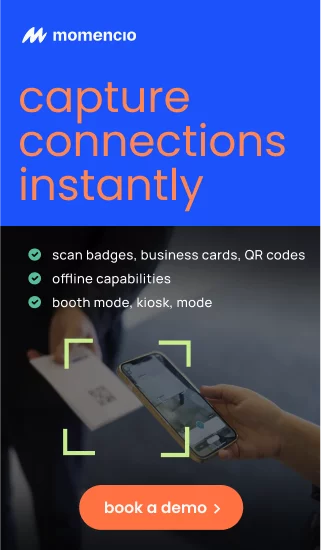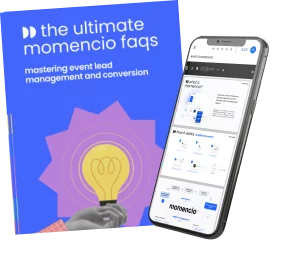If you are at Dreamforce this week and happen to spot Manos Sifakis (CEO, momencio), or Lila Diavati (CSO, momencio), don’t be a stranger. Drop by, say hello, and tell us what you are building.
This year’s theme — Agentforce 360 — signals Salesforce’s pivot from passive AI to active AI. Every product announcement reinforces one message: data, automation, and human decisions are merging into a single workflow. For exhibitors, that’s not just a product story. It’s a warning shot.
At Dreamforce 2025, speed of execution is the new brand currency. Everyone’s talking about AI; very few are acting at AI speed. Here’s what that means for people actually running booths, managing demos, or handling event data this week.
AI integration is no longer optional
Salesforce didn’t just rename its tools — it rewired its ecosystem to work through autonomous agents. That means the people walking into your booth are no longer thinking about “features.” They’re thinking about systems that act for them. If your demo or lead capture flow still relies on slow manual input or disconnected tools, you’ll feel outdated next to everything being showcased around you.
Your booth is now a real-time data node
Every conversation, scan, and content view is live intelligence. Treat it that way. Your lead capture process should feed into something that enriches, categorizes, and signals next steps immediately. The teams doing this right aren’t using Dreamforce to “collect” leads — they’re using it to build a live, self-updating sales pipeline before the event even ends.
Context beats traffic
Dreamforce attracts over a hundred thousand attendees, but booth volume doesn’t equal success. The real value lies in context — knowing who engaged, why, and what they need next. That requires a workflow that captures both behavior and intent. Without that, you’re walking away with a list, not a pipeline.
This event exposes your operational weaknesses
Every exhibitor here is under the same pressure: too many interactions, not enough structured data. How your team handles that load says more about your operational maturity than your booth design ever will. Use this week to test your internal processes under real stress — your data quality, CRM sync speed, and handoff logic. You’ll find what’s broken faster here than in any quarterly review.
Dreamforce 2025 is not a marketing spectacle — it’s a live audit of whether your event strategy can keep pace with an AI-driven sales world. If you can turn the chaos of this week into clarity, you’re not just keeping up with Salesforce’s direction — you’re future-proofing your own.
Who’s in the room: Attendees, exhibitors, and the changing crowd
Dreamforce isn’t just getting bigger — it’s getting more fragmented. The mix of attendees this year reflects how much the event world has changed since the pandemic and the rise of AI-first workflows. It’s no longer just sales and IT leaders. The 2025 audience is a full ecosystem: data scientists, AI product teams, marketing ops, partner startups, and customer success leaders — all coming in with different expectations from the same event.
Below is a snapshot of how that diversity plays out — and how exhibitors can read the room correctly.
| Audience segment | What they’re looking for | Why they’re at Dreamforce 2025 | How exhibitors should respond |
| Enterprise Buyers (CXOs, VPs, IT Leads) | Proof that AI tools create measurable ROI and integrate cleanly into legacy systems. | Agentforce 360’s pitch of “human + AI” alignment directly targets their digital transformation budgets. | Skip generic demos. Speak the language of risk mitigation, data compliance, and ROI. Bring case studies, not slides. |
| Field Marketers & Sales Ops Teams | Tools that close the gap between event engagement and CRM accuracy. | Frustrated by the disconnect between booth activity and post-show pipeline visibility. | Show operational value — instant lead capture, real-time sync, clean handoffs. They care about execution, not hype. |
| AI & Data Professionals | New ways to apply predictive models, data orchestration, and automation across customer touchpoints. | Dreamforce’s heavy focus on AI agents has made this group one of the fastest-growing attendee segments. | Position your solution as a data collaborator, not a silo. Talk about interoperability, APIs, and real-time enrichment. |
| Startups & Innovators | Exposure, investor visibility, and potential integrations with Salesforce ecosystem partners. | They’re here to get discovered — or to partner with ISVs already plugged into Salesforce’s stack. | Engage in co-creation conversations. Don’t sell to them; explore integrations and pilot programs. |
| Returning Exhibitors | Benchmarks for booth performance, lead quality, and event ROI improvements. | They’ve realized that brand presence alone no longer drives results in a post-automation world. | Offer collaboration, not competition. Peer-to-peer discussions here often open to partnerships. |
Why this matters
Dreamforce used to be a sales event. Now it’s a decision event — where everyone, from CIOs to field marketers, is measuring how fast ideas can become execution.
For exhibitors, the challenge isn’t just to impress — it’s to identify who’s in front of you and adjust instantly. The person scanning your QR code might not be a prospect; they might be a potential partner, investor, or even a future collaborator.
The smartest teams don’t just collect leads. They classify intent in real time.
What’s shaping the agenda: Themes, topics, and the ai under-current
Dreamforce 2025 isn’t about “what’s next.” It’s about who’s already ahead. Salesforce’s messaging this year revolves around one unmissable concept — the Agentic Enterprise — powered by Agentforce 360, a framework where AI agents act autonomously but stay grounded in human context.
Here’s what’s really driving the conversation this week — and what it signals for everyone working the floor.
1. Agentic systems are the new standard
Salesforce isn’t talking about chatbots anymore. It’s talking about AI agents that act, across Sales, Marketing, and Service.
These agents don’t wait for prompts; they interpret signals and trigger workflows on their own.
Why it matters: Event technology is heading in the same direction. Exhibitors can’t afford tools that “store” leads for later. They need systems that act in the moment — enriching, scoring, and routing leads while the conversation is still warm.
2. Data cloud is no longer a side product — it’s the core
The integration of Data Cloud across every Salesforce product means real-time customer data isn’t an advantage anymore; it’s a baseline expectation.
For event teams: If your booth capture data takes days to sync or needs manual cleanup before hitting CRM, you’ve already lost momentum. The Data Cloud mindset means the best event stack operates at the speed of conversation.
3. Slack is now the collaboration layer for everything
Dreamforce 2025 positions Slack not as a chat tool, but as the live interface between AI, data, and teams. Salesforce is embedding Agentforce agents directly into Slack so decisions happen where collaboration already lives.
What this signals: Post-event collaboration will follow the same logic. Marketing, sales, and ops will increasingly work within unified spaces. If your follow-up process still depends on email threads or exported spreadsheets, you’re fighting the new workflow culture.
4. Responsible AI is back in focus
The word “trust” is everywhere again — not as a buzzword, but as risk management. Salesforce is stressing auditability, data transparency, and human oversight.
Relevance for exhibitors: The way you collect and handle attendee data matters. Transparent consent, clear data usage messaging, and responsible enrichment are now brand differentiators. Compliance isn’t legal housekeeping anymore; it’s part of your booth story.
5. The shift from insight to action
All the keynote noise this year distills to one truth: data without action is dead weight. Salesforce is reframing its AI strategy around autonomous execution — turning context into outcomes.
For event marketers: That’s your cue. Lead capture, engagement analytics, and follow-up tools must shift from reporting to acting. The gap between “we’ll analyze it later” and “we already acted on it” is the new battleground for relevance.
Dreamforce 2025 is showing the future of CRM, but it’s also showing the future of event marketing. The same principles — real-time data, autonomous execution, connected collaboration — are now the minimum standard for anyone serious about converting conversations into pipeline.
If your event strategy still runs on manual decisions, this year’s agenda isn’t just a conference — it’s a forecast of what will replace you.
Lead capture in 2025: From data to decisions in real time
If Dreamforce 2025 has made anything clear, it’s this: the lead capture status quo is broken. Most exhibitors are still optimizing for collection, not conversion. They walk away with hundreds of names but little context — and the pipeline dies in translation.
Meanwhile, the next generation of event systems is already here — operating at AI speed, merging behavioral data, human notes, and follow-up intelligence in one motion.
Here’s what that contrast looks like:
| How most exhibitors still operate | How modern teams are evolving (and where momencio sits) |
| 1. Badge scans = lead capture. Once a badge is scanned, the job is considered done. The rest is delegated to sales ops “later.” | Badge scans = data triggers. Modern teams treat every scan as a workflow — automatically enriching data, identifying interest levels, and updating CRM instantly. |
| 2. Notes are handwritten or inconsistent. Reps write vague comments (“interested in product A”) with no structure. | Notes are structured and standardized. Tools like momencio let reps capture notes via speech-to-text, pre-tag intent, and attach booth context directly to the contact record. |
| 3. Follow-ups are delayed. Leads are exported days later, often in CSV format. By then, intent has cooled. | Follow-ups are triggered in real time. As soon as an interaction ends, an automated microsite or personalized content link is sent — keeping momentum alive. |
| 4. Engagement data is siloed. No one knows what happened after the show — who clicked, who engaged, who vanished. | Engagement is tracked automatically. momencio tracks microsite activity, time spent on content, and triggers lead scoring that syncs directly into CRM. |
| 5. Sales teams start from scratch. Leads are passed without context. Sales spends days figuring out what the conversation was. | Sales teams start with intelligence. Notes, behaviors, and engagement signals flow into CRM pre-qualified. Reps know what to say on Day 1. |
The difference isn’t technology — it’s design. Most tools stop at data collection. The new generation of systems, like momencio, go beyond: turning data into actionable insights.
That’s what “real-time” really means — not instant entry, but instant understanding and measurable actions.
The best field teams at Dreamforce this year aren’t bragging about booth traffic. They’re focussing on speed — how fast they shipped, or how fast they moved from conversation to action. And that’s what defines event ROI.
After the booth closes: Where most ROI disappears
The first 24 hours
Most teams are still packing crates and boarding flights. Their data sits unsorted in devices and scanners. No follow-up, no signal triage, no visibility into which conversations mattered.
The smart teams have already synced every scan and note into CRM. Sales wakes up to categorized leads, linked content, and a short list of high-intent contacts ready for outreach.
The next 72 hours
Marketing begins its “thank-you for visiting” blast — the same generic email everyone sends. Leads go cold while internal teams argue about ownership.
Meanwhile, the prepared teams trigger automated but personalized microsites for each conversation. Prospects receive a recap tailored to what they discussed at the booth, complete with relevant assets. Engagement data starts flowing back immediately.
The first 7 days
Most exhibitors are writing event reports that celebrate volume — number of scans, meetings booked, or impressions. None of it reflects movement in the pipeline.
The best teams are running alignment sessions. Marketing and sales jointly review behavioral engagement from the microsites, reprioritize follow-up lists, and adjust campaign messaging based on what prospects actually clicked or watched.
By the end of the week, one group has a folder full of photos and stats. The other has live opportunities in CRM.
Dreamforce doesn’t reward who talked the most; it rewards who moved fastest after the talking stopped.
How ROI is won or lost after Dreamforce
| Timeline | Most teams | Best teams |
| First 24 hours | • Focus on teardown and travel.
• Lead data scattered across scanners, notebooks, and devices. • No clear owner for post-event follow-up. |
• Sync all captured data before leaving the floor.
• Enrich and tag leads by intent and conversation context. • Sales team receives prioritized, ready-to-act leads. |
| Next 72 hours | • Send generic “Thanks for visiting” blasts.
• No personalization, no engagement tracking. • Marketing and Sales both waiting for each other to act. |
• Trigger personalized microsites or content recaps linked to each conversation.
• Track engagement in real time — clicks, content views, dwell time. • Sales uses engagement signals to plan outreach. |
| First 7 days | • Build vanity reports: booth traffic, total scans, impressions.
• Leads go stale while internal teams debrief too late. • No tie between event data and pipeline progress. |
• Conduct Sales–Marketing sync within a week.
• Re-rank leads by engagement quality, not quantity. • Report on real movement in CRM — meetings booked, opportunities opened, deals influenced. |
| Ongoing | • Archive notes and move on to the next event.
• Every new event starts from zero. |
• Feed booth learnings back into campaign strategy.
• Build a living feedback loop: each event improves the next. |
Conversations that count: How to read the room at Dreamforce 2025
This section is for exhibitors. Although, attendees and marketers can also take a leaf out of this.
It’s for the people standing on the floor this week, representing brands, managing demos, and trying to convert five-minute conversations into next-quarter pipeline.
Dreamforce 2025 isn’t a product showcase anymore. It’s a stress test for who’s ready to operate in Salesforce’s new world — the Agentforce 360 world of agentic AI, real-time data, and human collaboration. Every attendee walking through Moscone already knows what’s trending. They’ve seen the demos, they’ve heard the language. What they’re looking for now are proof points: who can show speed, interoperability, and trust — not just talk about it.
If you’re exhibiting this year, here’s what’s really happening on the floor and how to make your conversations matter.
Why attendees are actually here
Forget the surface-level reasons. Here’s what drives them in 2025:
- To see agentic AI in action: They’ve heard about autonomous agents that work alongside humans. They want to watch that collaboration play out — live, not in slide decks.
- To validate real-time readiness: Salesforce is pushing the idea that every system should move data instantly and securely. They’re testing whether you can, too.
- To compare governance approaches: Trust and transparency are top-line themes this year. Attendees will quiz you on how you handle data, auditability, and control.
- To scale beyond pilots: Many already run small AI experiments. They’re hunting for solutions that can make the jump to enterprise scale — with process, compliance, and speed intact.
- To benchmark reality: They’re comparing what they see at Dreamforce to their own internal setups. They’ll talk less, listen more, and make notes on who’s credible enough to revisit later.
What this means for exhibitors
Every booth conversation this year is a live audit — technical, operational, and philosophical. You’re not selling software. You’re defending competence.
- If you can’t describe how your platform connects into Agentforce, Data Cloud, and Slack workflows, you’re already behind.
- If your AI story skips the trust layer — how it governs, who approves, how it rolls back — they’ll walk away.
- If you only talk about product features, you’ll sound static in a year that’s all about motion.
Dreamforce 2025 has turned the show floor into a credibility filter. Every interaction either builds trust or exposes gaps.
How to rethink your conversations
- Start with context, not capability: Begin with “Here’s how this connects to what Salesforce is building this year.” It shows you’re aligned with the theme of the show, not orbiting it.
- Demonstrate interoperability: If you can trigger or integrate a workflow that mirrors Agentforce logic — do it. Show how data flows, how the system enriches, how outcomes sync in real time.
- Own your governance story: Bring it up before they do. Explain how your product handles privacy, oversight, and fail-safes. That’s not compliance talk anymore; that’s differentiation.
- Create small moments of control: Let attendees touch something — click, run, test. Dreamforce has built entire zones around hands-on experience. Reflect that energy in your booth.
- Close with continuity: Every conversation should lead somewhere digital: a microsite recap, an engagement timeline, a content follow-up. Anything less feels unfinished.
Why this year’s Dreamforce feels different
Because for the first time, Salesforce has given everyone — from CIOs to developers — the same mission: operationalize intelligence.
That means every visitor expects speed, context, and truth. They’ll measure you against that yardstick, whether you’re a startup or a global partner.
So treat your booth like a live case study — a place where your technology, messaging, and discipline prove you can move as fast and intelligently as the ecosystem you’re part of.
Dreamforce 2025 rewards clarity and competence.
If you can show both in under five minutes, you’ll leave with conversations that actually matter.
Measuring what actually matters
This section is for the teams who hate vanity metrics — the exhibitors and event marketers who know that “leads scanned” doesn’t equal “pipeline built.”
At Dreamforce 2025, measurement itself has evolved. Salesforce has reframed everything around real-time data, engagement depth, and conversion velocity. The companies winning this year aren’t the ones collecting the most leads. They’re the ones who can prove how fast and intelligently those leads move once they’re captured.
If you’re still reporting “total scans” or “booth visitors,” you’re speaking the wrong language.
What’s changed in 2025
Dreamforce’s own metrics set the tone:
- Salesforce is publishing live engagement dashboards in sessions, showing real-time questions, upvotes, and conversation threads.
- Product showcases now track AI readiness, data orchestration speed, and trust layer compliance as performance signals.
- Every demo zone measures interaction quality — how many people stayed, participated, and followed through digitally.
That’s the new normal. Attendees and organizers now expect dynamic visibility, not static counts.
So exhibitors must measure what mirrors this shift — how well they moved the conversation forward, not how many conversations they had.
The three metrics that matter
You can boil 2025 down to three categories that actually predict pipeline conversion:
| Dimension | Old metric (Irrelevant now) | New metric that matters | What it reveals |
| Engagement | Booth traffic, scans, footfall | Average interaction depth (time spent, content accessed, questions asked) | Whether your story holds attention in an age of overload. |
| Velocity | Leads followed up within X days | Time from first interaction → qualified meeting | Whether your team acts in real time — the new standard for relevance. |
| Continuity | Emails sent post-event | % of leads who re-engaged with microsite, video, or content asset | Whether your conversations had lasting impact beyond the booth. |
Dreamforce is about proof of motion — how fast and precisely your system closes the gap between conversation and conversion.
What exhibitors should really be reporting
The most credible exhibitors this year will track and report insights that show operational maturity, not activity:
- Conversation-to-content ratio: How many attendees received personalized assets within the first hour?
- Behavioral signal tracking: How many leads re-engaged with content post-event?
- Cross-team speed: How fast did marketing sync enriched data to sales?
- Conversion quality: Which conversations actually moved to scheduled meetings, and what patterns do they share?
This isn’t “advanced analytics.” It’s table stakes in an ecosystem built around closing the loop between lead capture and conversion.
Why these metrics earn you trust
Everyone at Dreamforce is talking about trust — but trust isn’t just a brand value; it’s a data behavior.
When your follow-ups show consistency, accuracy, and personalization, it signals operational integrity. Attendees remember that. So do potential partners.
The exhibitors winning long-term visibility aren’t shouting the loudest; they’re showing the cleanest data story.
This is exactly the measurement logic momencio was built around — where event engagement becomes living intelligence.
Field teams capture data instantly, enrichment happens in real time, and sales receives a clear map of lead behavior — all tracked through one connected view. That’s what Dreamforce 2025 is preaching this year: context, continuity, and velocity.
So don’t just capture leads. Close them.
Dreamforce through a different lens
Dreamforce 2025 marks a turning point. Salesforce is shifting from CRM as a platform to CRM as an ecosystem of autonomous agents.
That means the floor isn’t filled with competitors — it’s filled with potential collaborators, integrators, and co-builders in the agent economy.
So when someone visits your booth this year, they’re not just asking “what do you sell?” They are also evaluating how you think.
- How do you handle data?
- How do you design for interoperability?
- How do you bridge human intelligence with machine intelligence?
The companies that answer those questions clearly will leave with more than leads. They’ll leave with partnerships, credibility, and long-term positioning in the new Salesforce orbit.
Interesting trends and statistics to watch out
- Salesforce’s Data Cloud paid customer base grew 130% year-over-year, processing over 2.3 quadrillion records in a quarter — underscoring the shift toward unified, real-time data as a foundation for AI.
- Just 11% of enterprise CIOs say they’ve fully implemented AI, despite 84% believing AI is as significant as the Internet.
- In Q2 FY26, Salesforce’s AI + Data Cloud ARR rose 120% year-over-year, with many top deals bundling both — showing that buyers aren’t buying AI alone anymore; they demand it tied with data.
- 78% of business leaders now report their companies are already using AI agents, not just AI tools — validating the “agentic enterprise” shift being emphasized at Dreamforce 2025.
